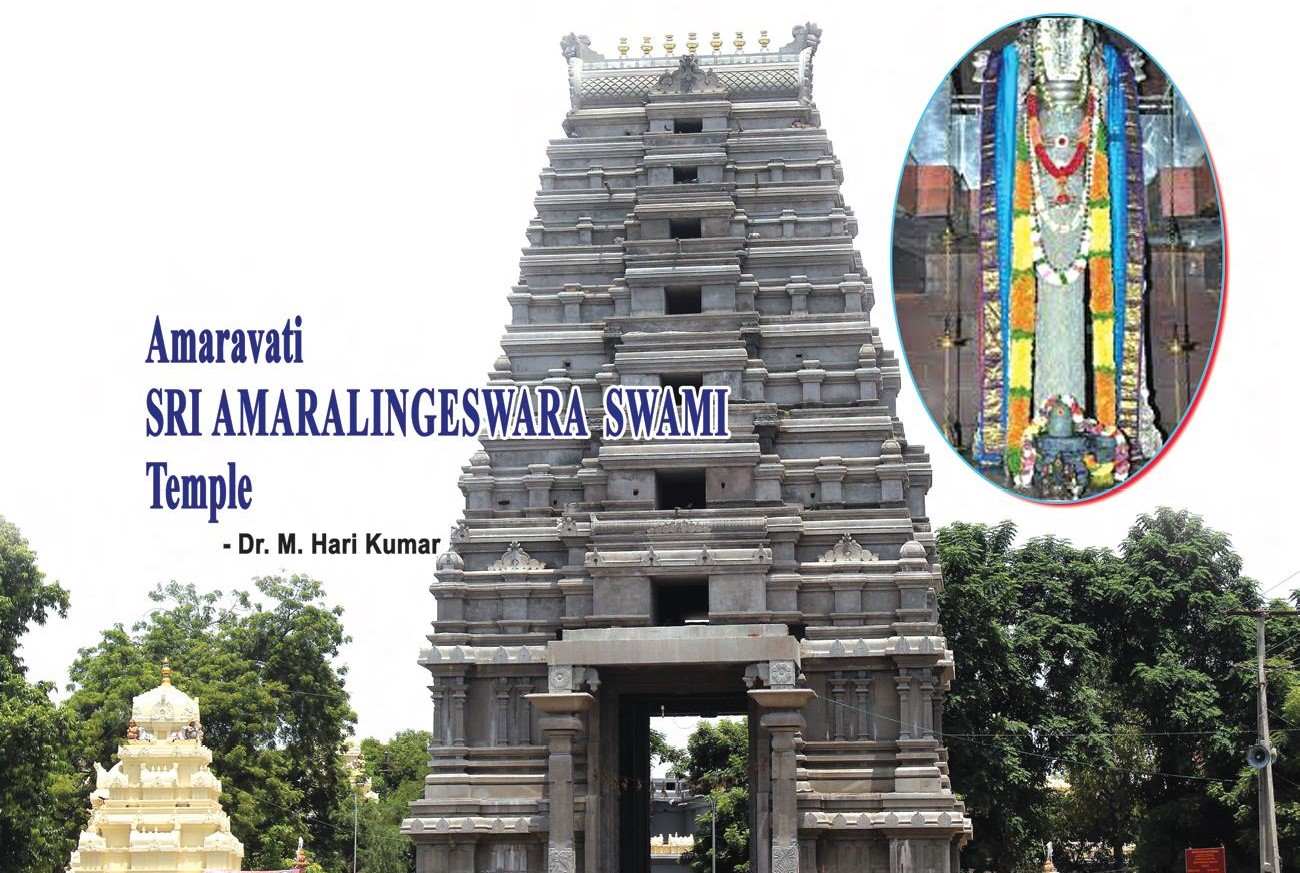Sri Amaralingeswara Swamy Temple
Amaravati, a celebrated centre of the Saiva pilgrimage in Andhra Pradesh, is situated on the southern bank of the river Krishna in the Palnadu district. Amaravati also called Dharanikota or Dhanyakataka, was the capital of many dynasties in ancient times.
It is one of the Pancharama kshetras and the seat of a Simhaparishat of the Saivas and its God. Amareswara Swamy is said to have been installed by Lord Indra. The consort of Lord Amaralingeswara Swamy is Bala Chamundika devi.
Description of the temple
The Linga of Amareswara is situated on the upper floor of a small shrine surrounded by three prakaras. The main entrance to the outer or first prakara is in the south and faces the main road. It is surrounded by a gopura of later construction.
The courtyard inside this prakara contains nine shrines which house in order, a linga named ‘Parameswara, Virabhadra, Jwalamukhi, Parthisvara, Somesvara, Mahishasuramardini, Kosalesvara and Virabhadra’. Inside is the second prakara with only one entrance in the west.
There are six small shrines inside this enclosure housing the images of Kumara, Hanuman, Ganapati, and Bhairava. At the center of this enclosure is a big raised platform with a flight of steps in the north and south near the eastern extremity. In this enclosure are to be found four small shrines in the cardinal directions, each with a linga inside.
There is one dhvajastambha to the east and another with a balipitha to the west. In the center is the shrine of Amareswara. The adhistana of the garbhagruha and antarala consists of upana, tripatta, patta, a narrow gala cut into compartments by short pilasters, and a broad allinga pattika.
The north and south walls of the garbhagriha contain in order, two pilasters, and a projecting kosta. The walls of the antarala contain two pilasters, a kosta between two pilasters. (Ramarao. M, Eastern Chalukyan Temples of Andhradesa, Hyderabad, 1984, p.40). The shrine contains on the axis the garbhagruha, antarala, mukhamandapa and mahamandapa. The mahamandapa has four rows of six pillars of the Chalukyan type.
There is a life-size statue of Raja Vasireddi Venkatadri Nayudu in this mandapa standing with his hands in Anjali facing the linga of Amareswara. The mukhamandapa beyond has openings in the north and south. There are four stout pillars in the centre slightly raised with the space between them.
There is a small Devi shrine to the north of this mandapa. The antarala is plain and narrow. The garbhagriha contains a tall marble linga emanating out of the vedi with an indenture at the top.
The vimana contains on each side a row of six pilasters, a kapota above them, a step with a lion in each corner, another step, a four-sided Nagara sikhara, and kalasa. The vimanas of all the minor shrines in this temple area contain two or more steps, a narrow gala, and Vesara sikharas.
Sri Amaralingeswara Swamy – History
As per some Legends, the demon king named Tarakasura defeated the gods. Then gods came to reside here and since then the place came to be called ‘Amaravati‘. Lord Siva is worshipped as Amareswara Swami or Sri Amaralingeswara Swamy with his consort Bala Chamundika Devi.
Swami in this temple
The Sivalinga here in Sri Amaralingeswara Swamy temple is very tall. According to some legends, Sivalinga was growing in size, and to stop its growth, a nail was hit onto the top of the Sivalinga. When the nail dug into the Linga, blood oozed from the Sivalinga.
The main festivals and rituals in the temple are Maha Sivaratri, Navaratri, and the Kalyanotsavas. Amaravati is thus an important kshetra situated at a particularly sacred spot of the river Krishna and is a consecrated place of worship for the devotees.
How to reach Sri Amaralingeswara Swamy Temple
This temple is located at a distance of 40 km. from Guntur, A.P. One can move on Busses and Trains to this temple.
Click here for google map’s location

